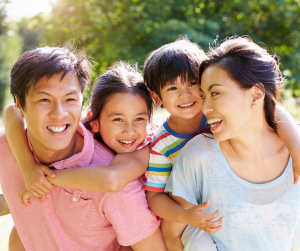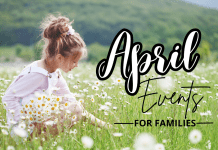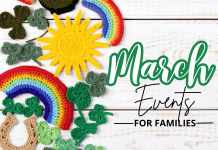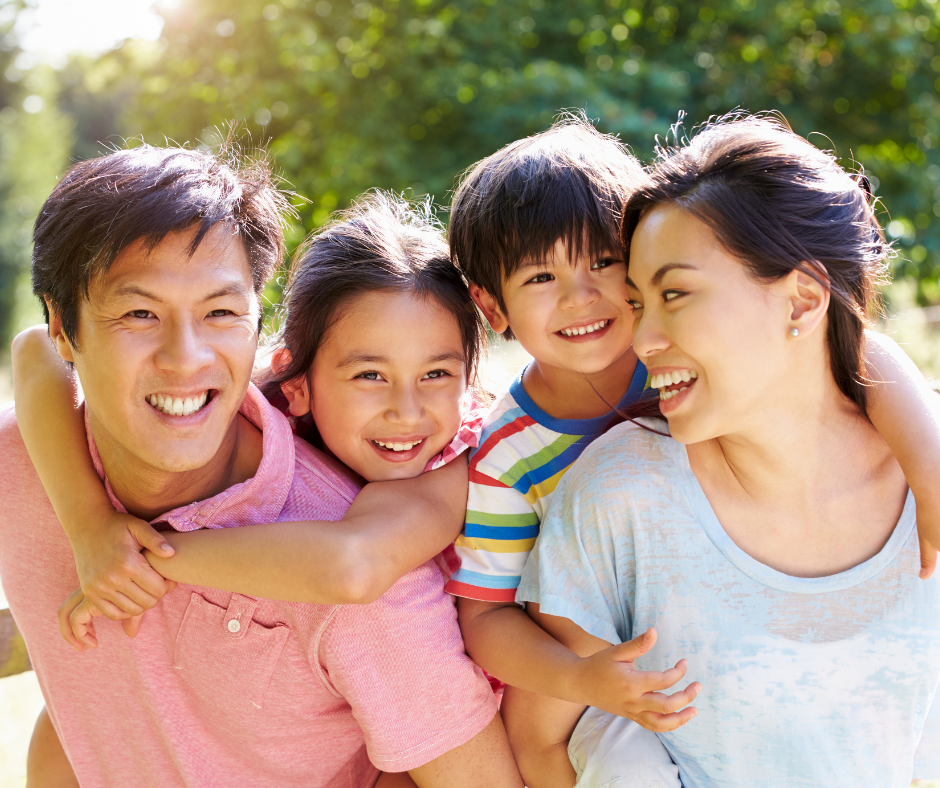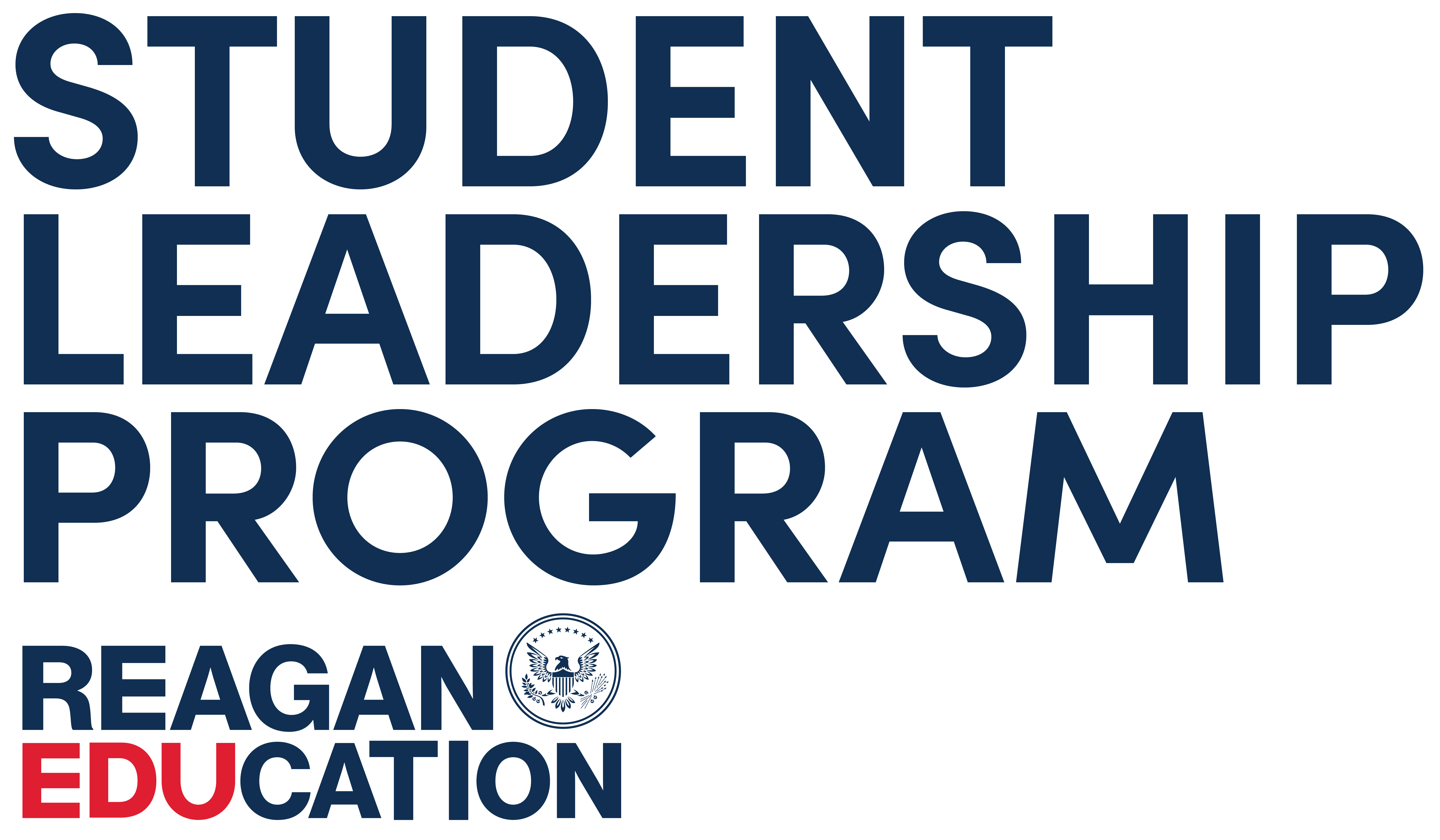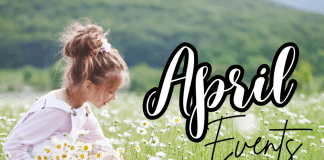I am proud to be an Asian American. I belong here.
After the Atlanta spa shootings, I saw so many photos shared on social media of mourning, scared, and outraged people holding signs that say “Stop Asian Hate” or “I Am Not A Virus.” As an Asian American myself, I feel a little ashamed that I’m not feeling stronger emotions. It’s not that I feel indifferent. I think it’s important to call out the injustice for the victims of the shootings and to spread awareness about the increase in attacks on the Asian American community. But I’m not as angry as some of my fellow Asian Americans or as vocal about it on social media.
What Happened?
In case you’re living under a rock, last month eight people were killed in a series of mass shootings at three Asian spas in Atlanta. Six of those victims were women of Asian descent. Yes, I am going to acknowledge that TWO of the victims were white. But a majority of them were Asians.
According to Heavy.com, the suspect Robert Aaron Long is a “zealously religious person” who had a “sex addition” and who “claimed his motive was to eliminate temptation.” If race wasn’t a motivation, why did he target ASIAN spas? While it is true that some spas and massage parlors have underground sex workers or human trafficking, there is no evidence that the Atlanta spa victims were sex workers.
Advocates criticize that emphasizing Long’s skewed view of his crime also perpetuates false and damaging stereotypes that hypersexualize Asian American women in our society. The entertainment media is largely to blame.
My Asian American friend Brad Sylvester described it best. “I’m tired of seeing Asian (American) women being hypersexualized, dragon lady, mean girl, side kick, here for the white man’s pleasure, “me-so-horny”, “me love you long time,” submissive characters. I’m tired of Asian (American) males being depicted as weak, effeminate, asexual, non-English speaking, martial artist, old man who mentors foreigner to be white savior (i.e. Mr. Miyagi from “The Karate Kid”), nerd, background characters. And I’m tired of having our stories being told by white Hollywood who casts a white character as the lead and the Asian characters as goofy sidekicks or love interests only.”
A Cherokee County Sheriff’s Office official commented that Long had “a really bad day.” A really bad day? I bet it was a really bad day for all those victims and their families. Even if the suspect claims the attacks were not racially motivated, Asian Americans have the right to grieve and be outraged.
NPR reports that the group Stop AAPI Hate has received nearly 3,800 reports of incidents of discrimination against Asian Americans since the COVID-19 pandemic began last March. Many of the attacks seem to have targeted elderly Asian Americans and working-class, Asian American women. Verbal and physical attacks against Asian Americans aren’t anything new.
My Background
I am a Korean American woman who was born in Tampa, FL and grew up in Oxnard, CA. My parents immigrated from Korea to the United States in the 1980s in search of a better life. My dad attended University of South Florida and majored in electrical engineering. After he graduated, he accepted a job at Point Mugu Naval Base and moved my family to Oxnard, CA when I was 16 months old.
I feel very lucky to have grown up in such a diverse city. According to the U.S. Census Bureau, population estimates as of July 1, 2019 show that white and Hispanic or Latino are the dominant races in Oxnard. Asians make up 7.2% of a total population being roughly 198,000. Oxnard’s major agricultural industry had attracted many Chinese, Japanese, and Mexican migrant workers. There was also a huge Filipino population, as described in this Los Angeles Times article.
In fact, my very first best friend in Oxnard was a Filipino girl named Christine Canute. Her family lived in the same apartment complex as us. I recently reconnected with her through Instagram, and she told me, “I think because of you and your family, I love Korean food.”
She also privately messaged me, “Loving your posts ‘Meedee’. Remember that’s how I know you as? I didn’t know your name was Miriam until we were older.” Christine was referring to my Korean name, which I normally spell “Miri”.
Many Korean Americans have a Korean name. Sometimes it is their middle name. Sometimes, in my case, it isn’t.
I was the first-born and was named Miriam Soon Choi. But aside from official documentation, my family called me “Miri”. There is a Korean phrase “Miri Miri”. When I asked my Korean friend to help me translate, she said there isn’t a perfect English counterpart. It roughly means “doing in advance because you’re antsy or anxious.” My dad said he named me “Miri” because I arrived earlier than anticipated through a C-section. It meshed well with my middle name Soon, derived from my grandma’s middle name and was a rough translation of “Miri”.
My Korean name also coincided perfectly with my American name Miriam. My grandfather, a retired pastor, named me after Moses’ sister from the Bible. He wanted me, as the eldest, to take care of my siblings.
Growing up in a Korean church
For as long as I can remember, I attended Oxnard Korean United Methodist Church (OKUMC). It is very common for Korean American immigrants to congregate in a church setting, even if they are not actually religious. Think of it more as a social gathering, a place of community where you can surround yourself with people who are like you. So you feel less alone.
Going to this church allowed me to have Korean American friends as a child. I was also exposed to older Korean American peers, whom I admired and learned from. I considered them similar to older siblings, which is common in Korean culture by referring to older peers as “unnie” or “oppa”.
When I was younger, I also went to a Korean language school every Saturday through my church. I spoke Korean as a kid, but eventually I just lost it. My parents were not very good at enforcing the language in our household. If you don’t practice a language consistently, it’s really difficult to keep up with it.
To this day, my mom speaks or writes to me in Korean, and I speak or write to her in English. We understand each other for the most part. If either of us needs clarification, we have my dad to translate or Google Translate.
Reflecting on my childhood
I don’t recall any traumatizing incidents of discrimination growing up. I only remember, as a child, a young boy made fun of my slanted eyes and my dad telling me that if that ever happens again, I should open my eyes really wide with my fingers and boldly state, “I’m an American!”
I attended private schools from preschool through first grade. It’s difficult to vividly remember those early years, but the few classmates I recall are the Asian American ones. There were so few of us. At Mary Law Private School, there was one Korean American, adopted boy. In first grade, there was one Filipino girl.
There was also a white, blue-eyed, blonde girl. I remember we took turns highlighting different students’ favorite things on a poster board displayed in the classroom. When it was my turn, I said my favorite color was hot pink. Not because my favorite color was hot pink (it’s blue, by the way) but because I wanted to copy her.
Reflecting on that, was I subconsciously trying to be like her? Because she was part of the majority, and I was part of the minority.
Fast forward to junior high school. I started the Gifted And Talented Education (GATE) program and became exposed to more Asian Americans. Maybe it’s because Asian Americans have a cultural inclination to academically achieve.
I also remember my favorite class in junior high school – English. I remember reading “The Diary of Anne Frank” and learning about the horrific experience of Jewish people. I remember going on a field trip to the Museum of Tolerance in Los Angeles and absorbing the knowledge.
In high school I mainly hung out in a clique in which more than half of the group was Filipino. I remember going to friends’ houses and devouring homemade Filipino food, mainly lumpia and pancit. My half-Japanese friend would invite me to Obon festivals where I saw people playing the Taiko drums.
My first boyfriend was a white boy during my senior year of high school. I listened to alternative rock or “indie” music such as The Postal Service. I identified myself as a “twinkie” – yellow on the outside, but white on the inside.
Being the token Asian American friend in college
For some reason, without even visiting the school, I decided to attend Sweet Briar College, a private women’s college in rural Virginia. Perhaps it’s because they were offering me scholarship money. We had received a brochure in the mail, and my dad encouraged me to apply.
I’ve always had a desire to seek approval from people. So when being offered money, my thought was “They like me! Maybe I should go!” Or maybe I was seeking approval from my dad. “If Dad wants me to go to this school, maybe I should.”
At the time, I wanted to be a journalist, and the school didn’t even offer a journalism degree. But I thought maybe a broad liberal arts degree would suffice. All my friends probably thought I was crazy for deciding to attend an all-women’s college.
I paid no attention to the fact that I would be a token Asian American among a sea of mostly white women.
If I had attended a UC or a Cal State school, as many of my high school peers did, I’m pretty sure I would stick to a group of other Asian Americans. Similar to why my parents chose to go to a Korean church, I would choose a group of Asian American friends to give me a sense of identity and support. Even though I grew up in a diverse city such as Oxnard, when I had the opportunity to, I chose to hang out with other Asian Americans. It’s not as though I was shunning other races and only wanting to stick to my own kind. It’s more just a natural gravitational pull.
But I didn’t choose those options. You would think that as the token Asian American I would feel alone and isolated. But quite the opposite was true. Just by going to an all women’s college, I had all the support I needed. I was surrounded by smart, powerful, and fierce young women who were ready to conquer the world. I still have very fond memories of my college experience.
An Asian American friend who went to UC Santa Barbara told me that she experienced a lot of racial comments while she was at school. That made me very confused. I went to school in a conservative state and was blatantly the minority at my school. I did not experience discrimination at all.
But my school was also a bubble. A beautiful campus on a vast amount of land. Because I was from out of state, I didn’t have a car. I mainly stayed on campus and relied on friends to drive me places as needed. Additionally, Southern hospitality is true – almost everyone I met outside of campus seemed friendly. This included my second boyfriend, a black man who attended a private, all-men’s liberal arts college an hour or so away.
What kind of friends did I have in college? My first roommate in college was an Indian girl from Botswana. She and I got along really well, and I have her to thank for my love of Indian food. I’m not sure who selects roommates for first years, but perhaps they thought sticking two Asians together made sense.
But as the years went on, my friendships shifted.
During my sophomore year, a white girl living on my floor introduced me to makeup and gave me my first makeover. She taught me that you should either emphasize your eyes or your mouth but not both. She made me realize that makeup doesn’t necessarily have to be for vain, pretty girls but could be a tool to enhance your natural beauty.
During my junior year, I lived in a quad with two white girls from VA and a Mexican girl from El Paso, TX. Several white girls I met also exposed me to how crude and funny some people can be. I had never experienced that before. They would have no shame in belching out loud in front of others. In fact, I mistakenly stereotyped white girls and thought, “Are all white girls like that?”
During senior year, I lived in a quad with three, different, white girls from VA. Two quiet girls and two outspoken girls, but all just wanting to have a good time. Senior year was my most fun year. Most people party their first year and then buckle down in their studies, but my experience was the opposite. I spent the first part of my college life studying and mainly keeping to myself and a couple friends. During senior year, I socialized. I went to dances. I went to spring break with a group of friends to Myrtle Beach. I attended social events at other colleges. I met a lot of really nice, black, male friends from Hampden-Sydney College, including one I fell in love with.
My Summer Abroad in South Korea
Want to know what else was fun? Studying abroad in South Korea the summer before my junior year of college. I spent 1-2 months living with my aunt and interning at Korea National Tourism Organization (KNTO). I wrote and edited articles for publication on the English version of their website. I assisted my supervisor and assistant managers as needed, mainly with administrative tasks. I considered it a cool, exciting internship.
But, as we all know, it’s the people who usually make a job worthwhile. I met three, other Korean American female interns and instantly bonded with them. I recently found an old email that one of them had sent me after that summer abroad. She wrote, “I remember in KNTO how we thought we were lost sisters because we had so many similarities and our birthdays were alike. Remember mine? It’s December 28 (mine’s February 28).”
After that internship ended, I participated in a summer program at Yonsei University. I stayed in dorms and took a couple courses (one language, one related to my sociology major, and a fun cooking one). Again, it was really easy for me to find a group of people I clicked with. One girl from Chicago reminded me of myself because she was also a bookworm who loved writing and editing. Some were more “Korean,” and some were more Americanized.
In any case, we all shared the fact that we were Korean Americans who were temporarily together in South Korea. We had fun together exploring the city of Seoul. One night we stayed out so late that we missed the last running subway and ended up having to take taxis back to campus.
So whether I was surrounded by mostly white people or mostly Korean people, I found a place where I belonged.
My Present
I’m now married to a half-white, half-Mexican man, and we are raising an interracial son. Our mutual friend who introduced us to each other called him an “egg” – white on the outside, but yellow on the inside.
Ironically, my husband attended Cal Poly Pomona, a college that is predominantly Asian. He hung out with a diverse group of people. His closest friends included a black friend named Billy and a Chinese friend named Rui. He still keeps in touch with them to this day.
But he also recounts experiencing prejudices from other minority groups growing up and through college (particularly from Asians and Mexican groups). At gatherings, oftentimes he’d be singled out and be ridiculed as a “gringo.” Instead of being welcomed, he’d get asked, “Hey, what are you doing here?” As though he had to prove himself. Would he have been treated differently if he looked 100% Mexican? In college, when expressing interest in a Japanese girl, an Asian American peer suddenly turned hostile towards him and commented, “Stick with your own kind.”
I understand the need to surround yourself with other people who are like you. It is normal behavior, and everyone does it, not just Asians. There is even a book titled “Why Are All The Black Kids Sitting Together in the Cafeteria?” by Beverly Daniel Tatum that is on my reading list.
It’s great to have a “tribe,” but if your “tribe” can be perceived as being exclusive to others, how do you think that makes others feel?
I think that everyone just wants to feel like they belong. Everyone wants to feel loved. You may not even realize that your “coping strategy” of only hanging out with your culture could be observed as “self-segregation”. And to an outsider, he or she may feel excluded from your group, even if that was not the intention.
Conclusion
American systemic racism is such a complicated issue, and I’m not sure what the solutions should be. A lot of angry Asians right now are tired of staying silent. They hope that by sharing their voices collectively, the government will enact better policies to help them feel protected and safer in their communities.
Oddly enough, I am not angry or fearful, not even the slightest. But I realize that I’ve been fortunate enough to not have racial comments constantly thrown at me, unlike many Asian Americans I know. I empathize with all the hurt Asian Americans. I read that four of the six Asian victims from the Atlanta spa shootings were Korean. My heart breaks for this country.
What do I want to teach my son and his generation? I want to teach him the importance of having a diverse group of friends. I want him to learn as much as possible about all kinds of cultures. I want him to accept people as human beings and not based on race.
But I also want him to be proud of who he is, a hodgepodge of different ethnicities. Instead of fitting in, I hope he chooses to be himself. I want him to teach other people about his cultures so that we eliminate ignorance.
How do I teach him that? By being the best role model I can be.
Did you know that May is Asian/Pacific American Heritage Month? I hope we take this time to celebrate, to appreciate the contributions that Asian Americans and Pacific Islander Americans have made to this country.
I’m going to end with a quote from Federico Mayor, Director General of UNESCO, that was found on the Museum of Tolerance’s website:
“… it is crucial for all of us to give new meaning to the word ‘tolerance’ and understand that our ability to value each and every person is the ethical basis for peace, security and intercultural dialogue.
A peaceful future depends on our everyday acts and gestures. Let us educate for tolerance in our schools and communities, in our homes and workplaces and, most of all, in our hearts and minds.”
